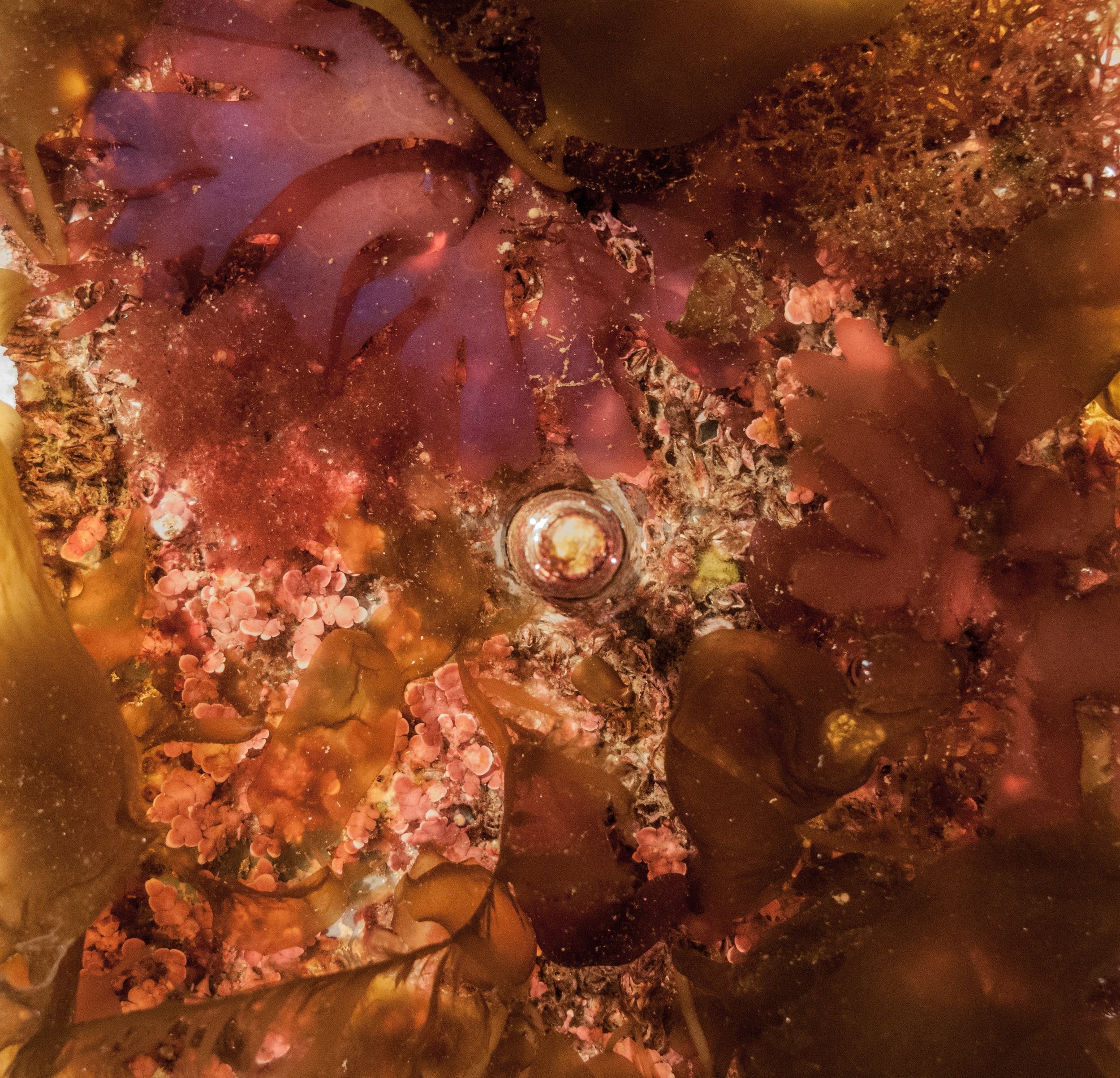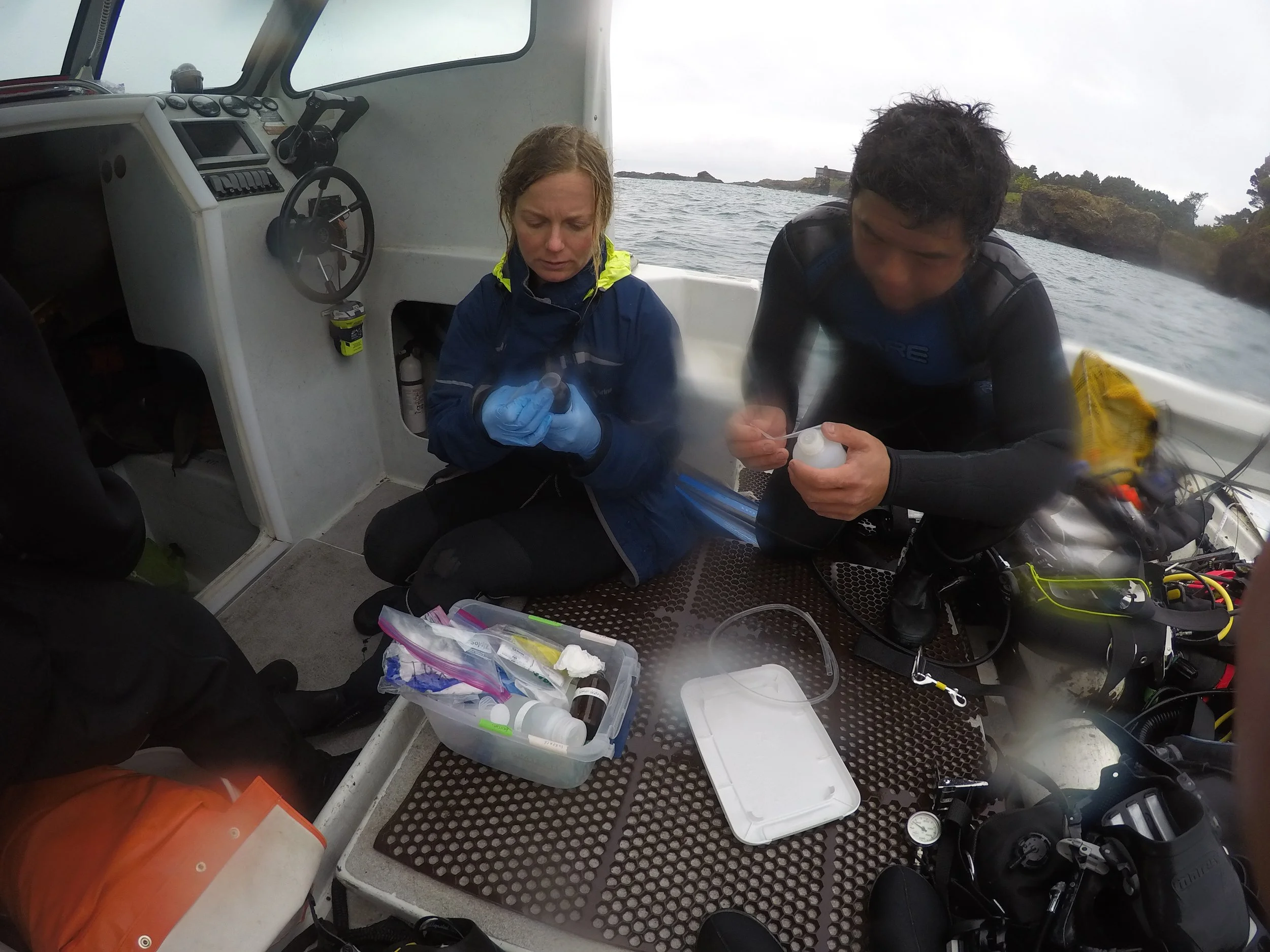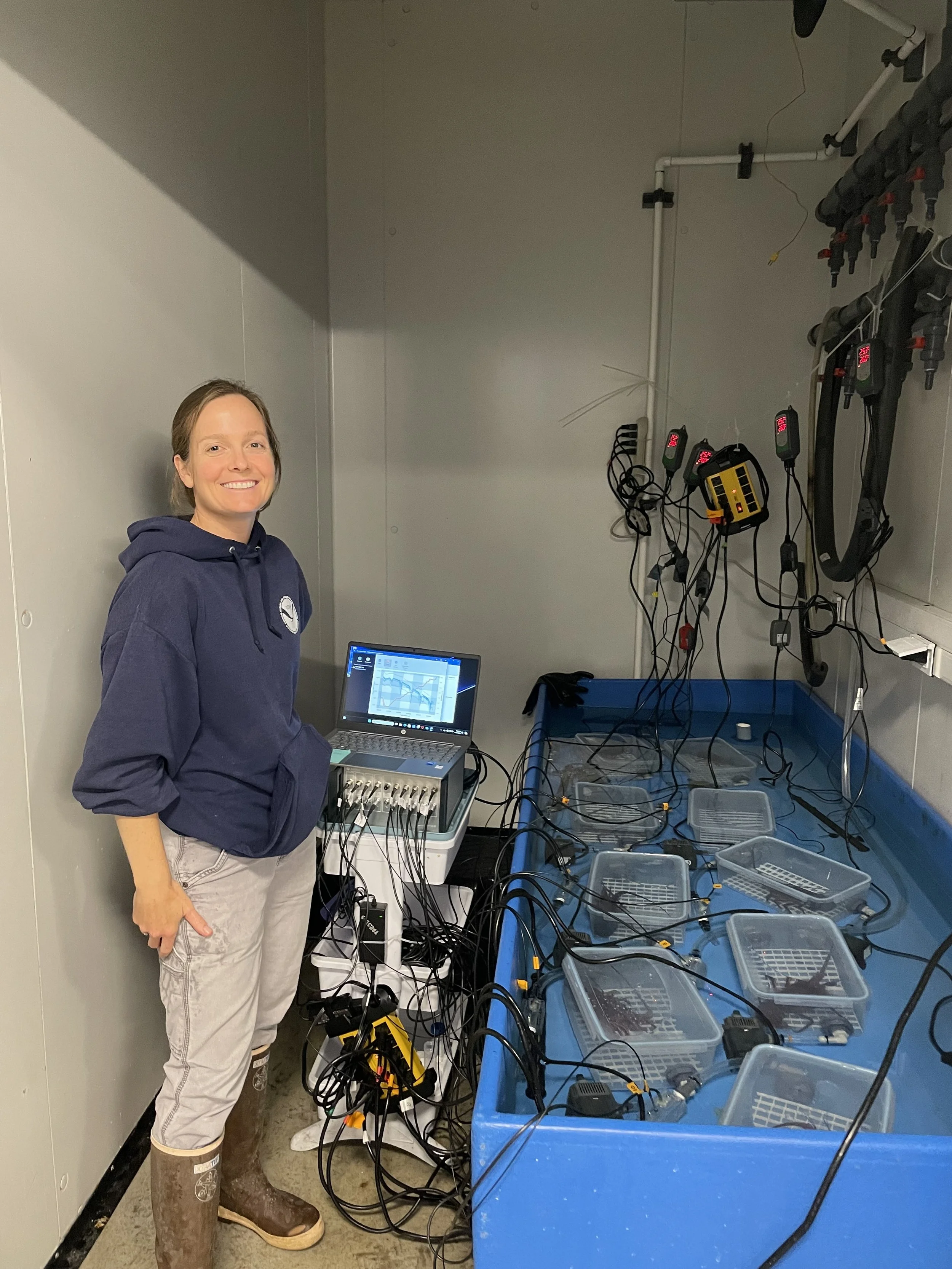
Research
Ecophysiology
Understanding the balance between energetic costs (metabolism) and gains (consumption) can be helpful in determining how species cope with stress, since this balance is important for growth and survival. My research links physiological (i.e., metabolic rates) and ecological (i.e., species interactions) measurements to gain insights into how marine organisms are responding to environmental change (both natural and anthropogenic). I utilize large controlled mesocosm experiments manipulating environmental drivers (e.g., pH, temperature, and dissolved oxygen) to determine 1) species potential to acclimate/adapt to environmental change, 2) biological tradeoffs in response to stress, and 3) the effects of climate change on marine species.
Environmental variability
Fluctuations in environmental drivers are inherent to all ecosystems and important in shaping how species respond to environmental change. I work in collaboration with oceanographers and ocean chemists to collect and analyze high-frequency measurements of ocean pH, temperature, and dissolved oxygen. I have deployed oceanographic sensor arrays extensively within kelp forests, coral reefs, and seagrass meadows. These data have been used to 1) inform environmental conditions used in laboratory mesocosm experiments, and 2) contextualize experimental work measuring the effects of environmental change on species and ecosystems.
All of my work is driven by a desire to conserve and protect the marine ecosystems and communities that rely on them. As such, my past research focused heavily on the impacts of climate change on both coral reef and kelp forest ecosystems. My current work as a postdoctoral scholar is focused on assessing the potential ecological benefits of marine protected areas in the southern California bight. I am also currently working with collaborators on a project focused on determining the adaptive capacity of the California spiny lobster and spiny lobster fishery to future climate change.


